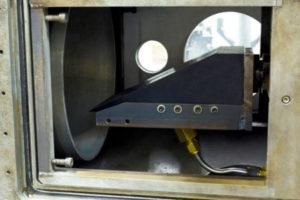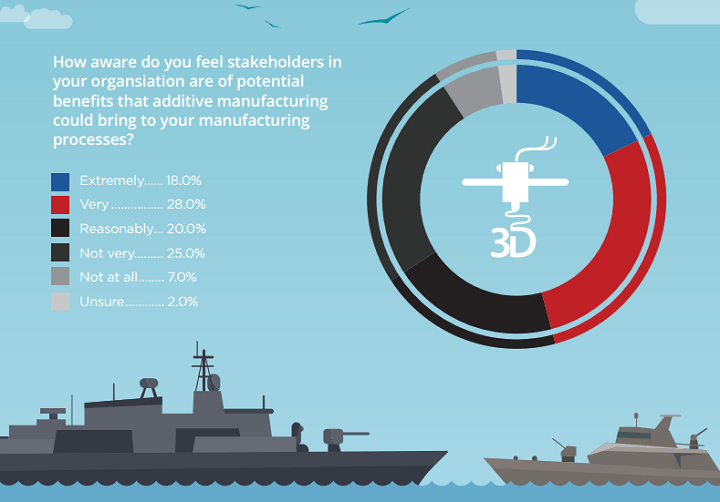Military research, analysis, and commentary company Defense IQ revealed in a recent study presented via an infographic that over 28% of surveyed military professionals and stakeholders are actively looking into the development and implementation of 3D printing or additive manufacturing-based systems.
Previously, 3DPrint.com reported the increasing usage of 3D printing technology in the fields of military defense, aircraft, and spacecraft manufacturing.
We have previously taken a look at how Oxford Performance Materials (OPM) will play a vital role in the development of Boeing’s spacecraft CST-100 Starliner by replacing the majority of components within the crew capsule with lightweight and robust 3D-printed parts.
Lawrence Varholak, President of OPM Aerospace & Industrial, emphasized the efficiency of using 3D printing technology in manufacturing processes, stating that 3D printed materials or components are significantly easier and faster to produce.
Military research, analysis, and commentary company Defense IQ revealed in a recent study presented via an infographic that over 28% of surveyed military professionals and stakeholders are actively looking into the development and implementation of 3D printing or additive manufacturing-based systems.
Previously, 3DPrint.com reported the increasing usage of 3D printing technology in the fields of military defense, aircraft, and spacecraft manufacturing.
We have previously taken a look at how Oxford Performance Materials (OPM) will play a vital role in the development of Boeing’s spacecraft CST-100 Starliner by replacing the majority of components within the crew capsule with lightweight and robust 3D-printed parts.
Lawrence Varholak, President of OPM Aerospace & Industrial, emphasized the efficiency of using 3D printing technology in manufacturing processes, stating that 3D printed materials or components are significantly easier and faster to produce.
Prior to OPM’s partnership with Boeing, 3DPrint.com also covered the active involvement of military agencies and the air force, such as the Brazilian Air Force, in the integration of 3D printing technology into traditional manufacturing methods, as well as many other military applications around the world that can benefit from additive manufacturing.
According to the study from Defense IQ, which’s reported as “Additive Manufacturing: On the Cusp of an Aerospace, Defense and Space Revolution,” the global defense, aerospace, and spacecraft industry are similarly observing the rapid increase in demand for 3D printing technology.
A growing number of executives, government officials, defense specialists, and aircraft designers are shifting towards 3D printing technology to deal with each step of development, beginning with prototype development and ending with distribution. Defense IQ states:
“Since the first patents were filed for the stereolithography process in 1984, additive manufacturing (AM) has had the potential to revolutionise global business. The advance of technology in the past three decades has led to some calling the rise of 3D printing ‘the third industrial revolution’. In the aerospace, defense and space sectors, additive manufacturing is primed to streamline supply chains, better manage material inputs and process challenges and help tailor product strategies. We went to our community of additive manufacturing professionals to find out what the present and future hold for the applications of this cutting-edge technology.”
The study on Defense IQ surveyed and interviewed military and defense industry professionals and leaders to better understand the demand for 3D printing technology.
Researchers at the company also evaluated the long-term plans of companies within the military and defense markets to see whether 3D printing technology is embedded in their roadmaps.

In addition to that, 75% of the study’s respondents stated that 3D printing technology will be established as the base protocol or technology to guide manufacturing processes within the next 10 years.
Even the professionals in the field of defense who didn’t have a thorough understanding of the benefits of 3D printing technology believed that technology was essential for the market, especially to enhance or optimize manufacturing processes.
In fact, 28% of the professionals thought that manufacturing was the biggest challenge within the two industries, and the other 16% stated that design or prototype development was the second most vital issue industry leaders must focus on.
Among the three studied sectors, respondents found aerospace to be the most likely domain where “additive manufacturing [will provide] the most benefit over the next five years,” with defense and space applications trailing the vote.
This study was released ahead of next month’s Additive Manufacturing for Aerospace, Defense & Space conference, to be held in London on February 21–23.




